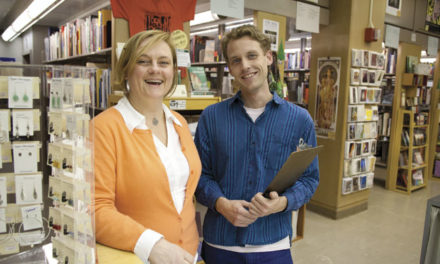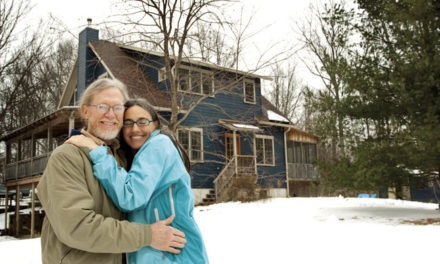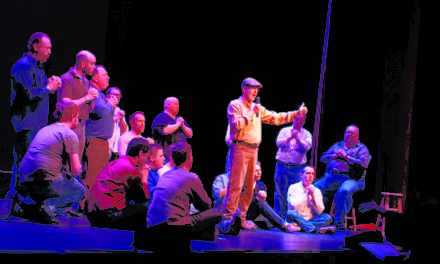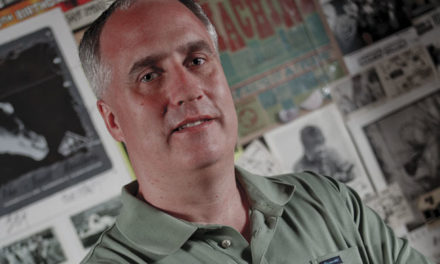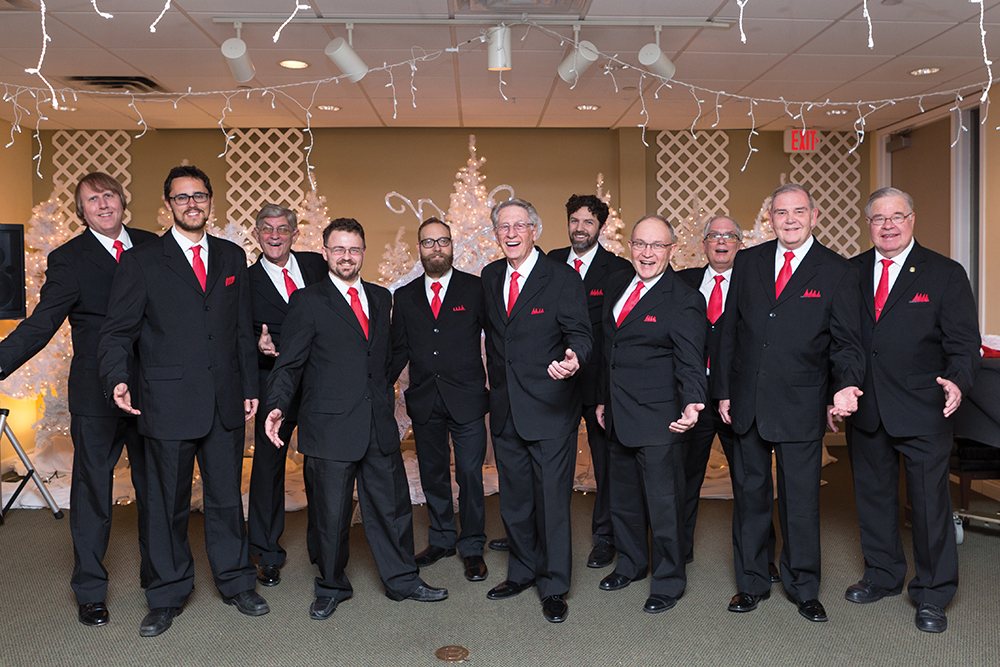
(l-r) Jim Topp, Andy Fak, Mike Hughes, Joe Grimme, Daniel Lentz, Bob Thrasher, Thomas Tiggleman, Gary Brown, Stephen Chambers, Ken Grohman, Lloyd Schlick. Photo by Frank Schweikhardt
BY PAUL BICKLEY
Originating in the late 1800s, the distinct vocal stylings of barbershop singing—generally a quartet singing a capella-style in four-part harmony—is still performed by groups dedicated to its preservation. One such group is Sounds of Indiana, a Bloomington-based chorus chartered by the Barbershop Harmony Society in 1976.
Singing in quartets and a full 15-member chorus, Sounds of Indiana appears regularly at Bell Trace and Meadowood Retirement Community, and stages two or three larger shows each year. In October, the group performed an Indiana bicentennial program at the Ivy Tech John Waldron Arts Center featuring the music of famous Hoosiers such as Hoagy Carmichael, Cole Porter, the Ink Spots, and The Four Freshmen. The group’s regular repertoire includes show tunes, songs of faith, jazz, doo-wop, and American standards.
Sounds of Indiana has won the Indiana-Kentucky district chorus championship, and its Jordan River Crossing quartet was selected to perform in the Indiana University production of The Music Man last spring. “That musical has done more for barbershop than any other single thing,” says group member and retired physics professor Ben Brabson, 79.
Barbershop harmony largely consists of four parts: leads, tenors singing above the leads, and baritones and basses below. Brabson says barbershop singing requires a lot of coordination among 15 voices. Arrangements include extended notes on open vowels, allowing for the production of overtones (tones not sung but produced by those that are). And barbershop overtones can extend well into the soprano range. At that point, Brabson says, “It sounds as if women are joining in.”
The group is always seeking new members. There’s no audition, and no experience is required. Current members range in age from 25 to 82, and come from all walks of life. “This is a chance to extend music beyond high school,” says group member Lloyd Schick, 72, a retired research scientist.
Says Brabson, “It’s a great pleasure to know that every Wednesday night, I’ll join friends to sing, chat, and extend my artistic life.”
For more information, visit soundsofindiana.wixsite.com.


